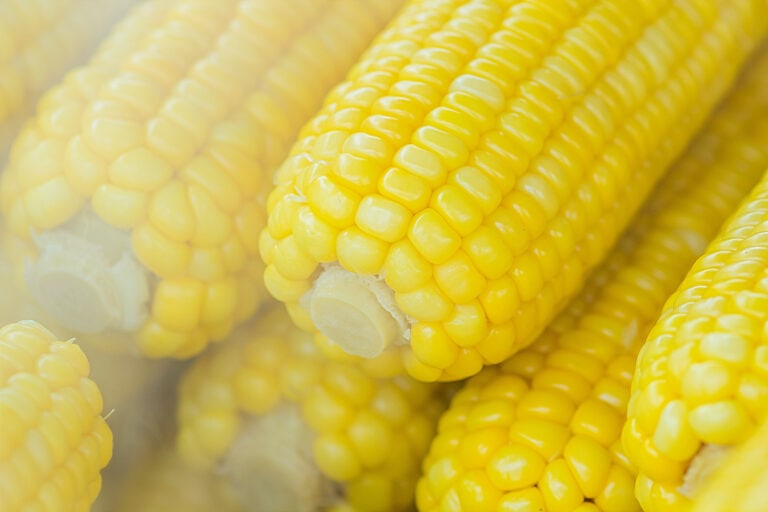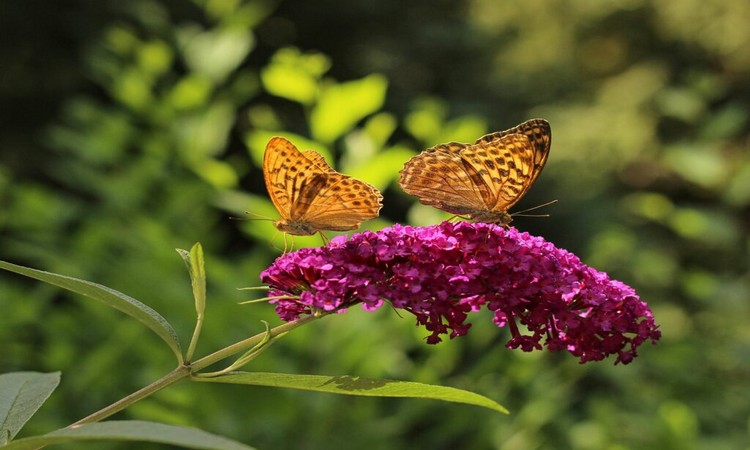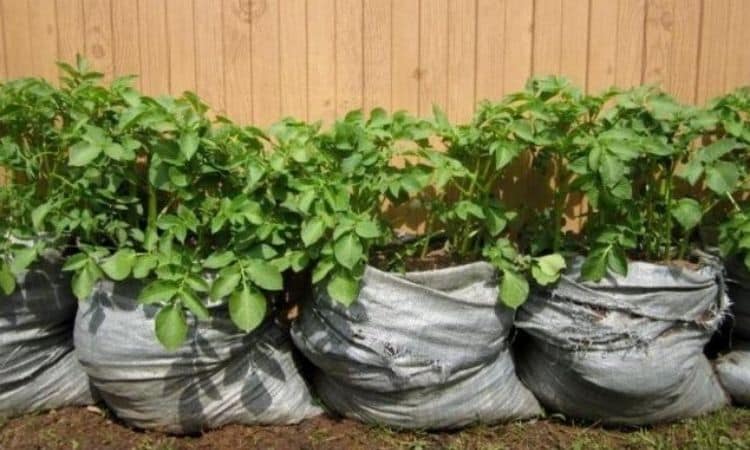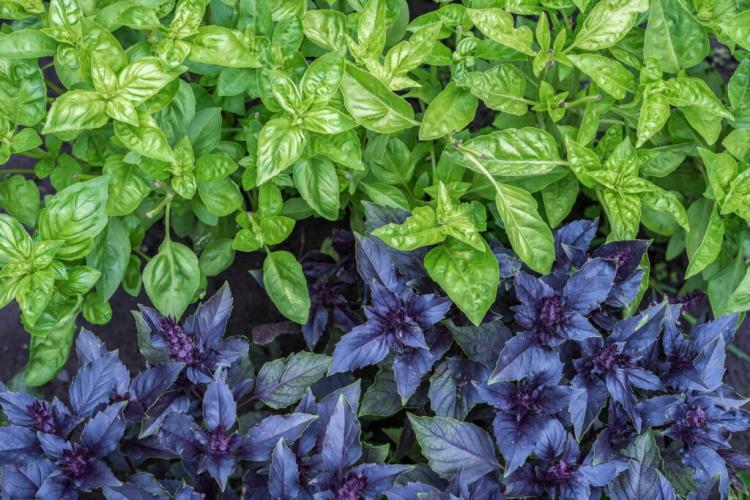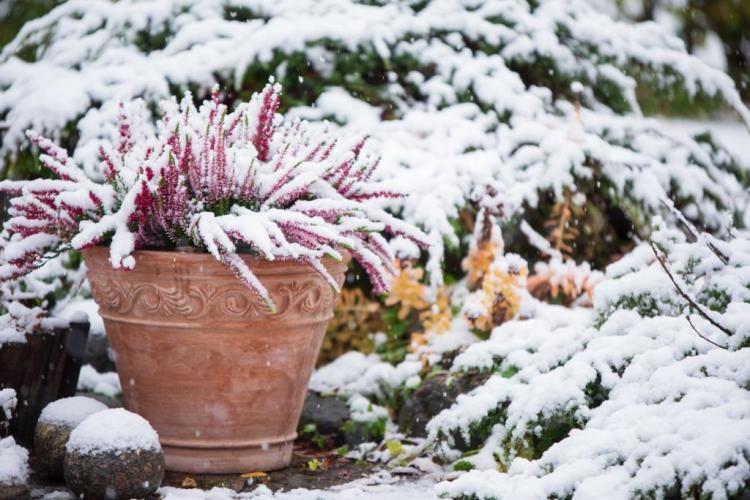Laurel: The Warmth-Loving Spice Bush In Portrait
Bay leaves add great flavor to many dishes. We show what you need to consider in cultivation to harvest the aromatic foliage at home. The real laurel ( Laurus nobilis ) originally comes from the Middle East. Laurus is the genus of laurels that belongs to the laurel family ( Lauraceae ). Germany is known worldwide for the supposed national dish, sauerkraut. In addition to cloves and juniper berries, bay leaves are of course included in the preparation process, to really make it what hearty sauerkraut means to us.
In other regions, the noble laurel is also popularly referred to as Daphne. According to a myth, the nymph Daphne turned into a laurel bush to escape the immortal love of Apollo. In ancient Rome, the laurel plant was therefore sacred and a tied laurel wreath was worn as a headdress in the empire to express power and high esteem.
Laurel: grow in your own garden
Table of Contents
Due to the excellent suitability of bay leaves for cooking, cultivation in your own garden is desirable. But that is not easily possible. We will show you what to consider if the real laurel should take a place in your own garden.
The perfect location for laurel leaves
The real laurel, which comes from the Middle East, likes it sunny. But now you shouldn’t go straight to the point and dig a hole in the bed. In addition to the sun, the evergreen places much more value on warmth. When cultivated in beds, in most regions of the USA, the chances of survival of this laurel plant are extremely low, even in a light frost. You should rather decide to grow in pots as a preventive measure. A well-draining substrate with a certain amount of sand should be selected for this. It can have a high nutrient content and should also have good water holding power.
Propagate laurel
The real laurel can be propagated both by sowing and by cuttings. To do this, the fresh fruits are pretreated in water for two days. Then you can best lay it out in normal sand and cover it in seed thickness. The laurel seeds should only be sown fresh, as the degradation of its germination capacity is very rapid. To be able to obtain seeds yourself, a female plant must be present.
You might so like: Cherry Laurel: Expert Tips For Planting, Pruning, And Care
Bay plants form either only female or exclusively male flowers on a plant (dioecious). Propagation via cuttings is carried out in August or September. Simply cut off shoots up to 20 cm long that is still young and not lignified and put in a permeable substrate. Of course, high humidity must also be ensured when propagating the spice laurel cuttings.
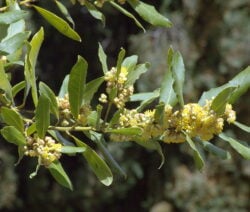
For the laurel to grow and bloom, it needs a sunny and above all warm location
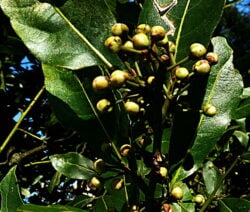
The fruits of the laurel can also be used for the propagation

With proper care, your laurel can grow into a handsome shrub
Water and fertilize bay leaves
The laurel likes it neither too wet nor too dry. However, it has to be watered frequently, especially in summer. To reduce the water requirement of the evergreen shrub, the bucket should be placed in a sheltered place. It is also advisable to water the laurel plant rather twice a week, but then vigorously, instead of giving watering water every day. The very fine roots of the laurel, which are constantly shying away from moisture, are also happy about this. But the roots don’t just shy away from waterlogging – they are also very sensitive to salt. Therefore, rainwater with a low salt content should always be used for watering.
You might so like: Powdery Mildew On Roses: Identifying And Combating Powdery Mildew And Downy Mildew
In addition, you do not necessarily have to fertilize the real bay leaf both in the pot and in the bed. It is often sufficient to select a well-fertilized substrate and repot it regularly every two years. Of course, a larger bucket should be used to be able to enclose the root ball with some new soil. If you tear open the root ball with a hook, this stimulates the fine roots to branch.
Maintain the laurel
The warmth-loving laurel does not really feel at home in our latitudes. Except in mild regions such as Lake Constance or the Lower Rhine, it does not survive the winters unscathed here. It is, therefore, better to cultivate the spicy laurel plant in a bucket and put it in a frost-free, but a light place in winter. But be careful: Watering must not be completely stopped even in the cold season, otherwise, the bay leaves will return from hibernation with lots of brown and yellow leaves.
Regular pruning should be done to keep the shrub in shape. Either way, you should take the trouble and cut by hand. When cutting with a hedge trimmer, many leaves are often shredded and thus offer dangerous entry points for pathogens. Should be cut in March. A topiary can even be created from real laurel at will and thus converted into a decorative element in the garden. If the laurel comes back from winter dry and radically defoliated, radical pruning can ensure the second spring of life and fresh outgrowth of new shoots.
With the laurel, you should pay attention to the infestation with scale insects. If the pests are detected early enough, they can simply be collected. However, if there are too many over time without intervention, the use of a pesticide can soon no longer be avoided to preserve the plant. Depending on the agent, the leaves should of course no longer be used for seasoning at first.
Laurel varieties and similar species
There is not really a great variety of Laurus nobilis varieties on the Central European market. However, if you know exactly what you are looking for, you can at least get hold of the rarities in specialized online shops. We will introduce you to the varieties and their peculiarities:
- Aurea: golden yellow foliage; particularly sensitive to cold wind.
- Angustifolia: narrower foliage; sensitive to frost; slowly growing.
- Saratoga: classic foliage and ordinary growth; relatively low water requirement; good for poor soils.
Similar species: Not only Laurus nobilis has aromatic foliage
In addition to the real laurel, there are a few other species that are popular in cultivation due to their spicy foliage. They only partly belong to the laurel family ( Lauraceae ). In terms of flavor, they usually show great differences from real bay leaves.
- Indian laurel ( Cinnamomum Tamala ): grows in the Himalayas; Leaves add a cinnamon note.
- Indonesian bay leaf ( Pimenta California ): popular in Southeast Asian cuisine; similar to the real laurel used here.
- West Indian laurel ( Pimenta racemosa ): oil is obtained from harvested leaves; Note reminiscent of the scent of cloves; Oil is said to have an antiseptic effect.
The trivial names always have a reference to a certain region, as they are mostly only known here and are used as an herb.

